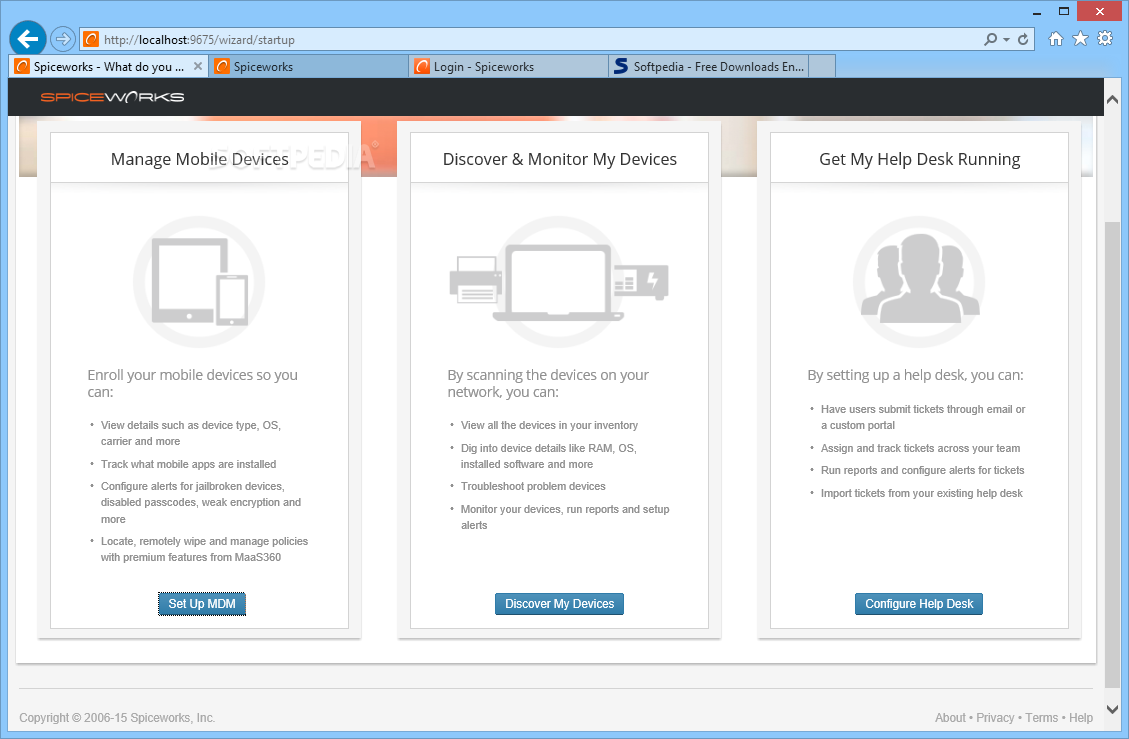

Groups, with hierarchical inheritance options.You want a global alert if any server falls below 20% disk space free? Have fun fiddling with files in the install folder because there's no way to do it in the UI.Īssuming you do actually work for spiceworks, all that you need to implement to massively increase the utility of NM and bring it up to par with other free network monitoring tools are the following: Another issue is that there's still no way to control global thresholds outside of the default values. The hub itself has horrendous performance issues and eats browser RAM like nothing else i've ever seen (i'm fairly sure there's a memory leak somewhere but spiceworks don't seem to want to do much about it).


About 15 of my servers that I wanted to trigger alerts at sub-10% disk space are currently set to 8-12% because the bloody slider is so imprecise. Another huge gripe is that almost all of the value controls are done with fancy sliders that are irritatingly imprecise. Have fun manually configuring 50 servers one-at-a-time. Firstly, all of the thresholds are specified either globally or individually, which is a huge pain if you have, say, 100 servers of which 50 should trigger an alert when cpu usage reaches 90% and 50 should trigger an alert when cpu usage reaches 80%. Seconding this, Spiceworks network monitor is incredibly basic and is missing a ton of features that you would expect any basic monitor to be capable of. I've never used spice works, so it really depends how much information it exposes to a 3rd party, and if it gives a 3rd party access to log in to your servers or be able to view the patient data somehow. it's about protecting the integrity of patient data and keeping it secure and private and not accidentally disclosing it. If our monitoring system kept logs of file names in a folder, and those file names had patient names in them, then we'd have to make sure the monitoring system was just as secure and compliant as the server hosting patient data. The only thing our monitoring system gets from servers that host patient data is how full the disk is, how much CPU is being used, how much RAM is in use, and if various services are running. If your monitoring system doesn't touch the data, and doesn't give other people access to it, there's really no issue.

If your monitoring system somehow takes patient data and stores it somewhere else on a system you don't control, there is a problem. You need to discuss this with your local HIPAA compliance person, but HIPAA is all about patient data.


 0 kommentar(er)
0 kommentar(er)
